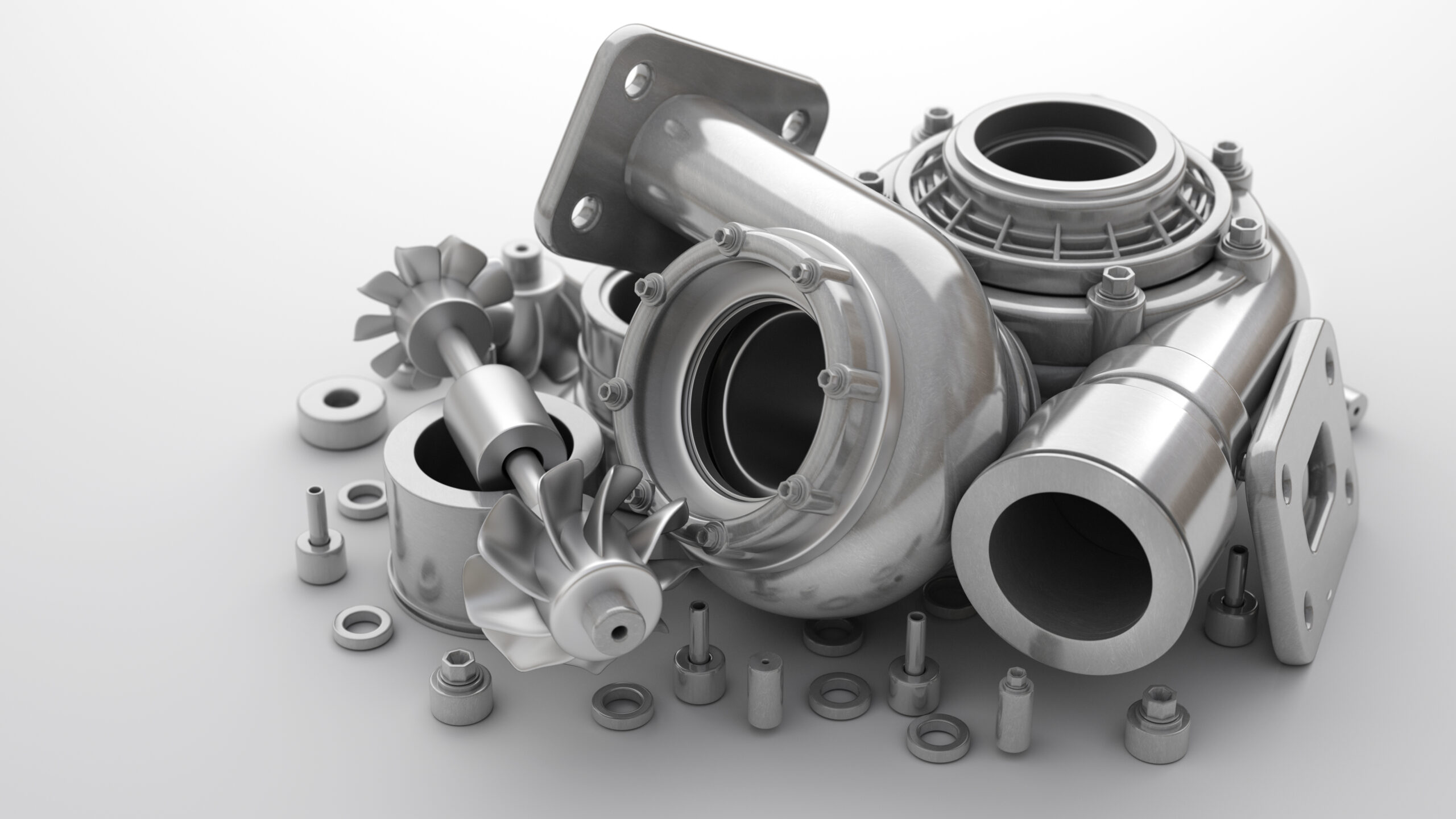The classic turbocharger with wastegate
The classic wastegate turbocharger is the variant with a bypass valve or relief valve. The turbocharger shaft, turbine or compressor wheel rotate faster and faster as the volume of the exhaust gas increases, thus increasing the engine speed. The increase in speed is accompanied by an increase in the mechanical and thermal load on the components involved. From a certain charge air pressure (defined by the mechanism or electronics of the control diaphragm), the waste gate opens on the turbine side and leads the exhaust gas flow through the turbine that goes directly to the exhaust system (electronic charge air pressure control. The turbine speed does not increase, there is no other regulation option.
The turbocharger pretty much only works within a specific speed window. If the engine speed and the exhaust gas flow are too low, the turbocharger does not generate performance.
The Turbine
The turbine wheel is responsible for converting heat and pressure into rotational force. To understand how this process occurs, we would need to delve into some of the basic laws of thermodynamics, but within the scope of this article, understand that high pressure (from the exhaust manifold) will always seek low pressure and within this process, the Turbine wheel converts kinetic energy into rotation. As the turbine wheel turns, it turns the turbine shaft, which in turn turns the compressor wheel. Often overlooked, turbine wheel selection is critical to a properly constructed turbocharger system, as having too small a turbine wheel will induce excessive back pressure and can choke the engine, causing it to lose power. On the other hand, selecting a turbine that is too large will result in a longer delay and can make it difficult to achieve specific pulse numbers.
Compressor
Compressor wheels are one of the most talked about parts of a turbocharger. Like the turbine, the compressor section is made up of two main components: the compressor wheel and the compressor cover. The job of the compressor is literally to compress fresh air and channel it into the throttle body.
Center Housing / Swivel Assembly (CHRA)
The CHRA may not have a lot of ink time, but it is one of the most critical parts of any turbocharger assembly. Practically, the CHRA serves as the mounting point for both housings and must be made of substantial material to handle the heat and stress of the turbine.
Intercooler
By understanding that a turbocharger works by compressing air, it is easy to understand why an intercooler is important. Without going into too much math (we’re talking about the ideal gas law again …), let’s say that as pressure increases within a fixed volume, heat is created.
Bleed valves
A bleed valve is essentially a pressure relief valve, which is mounted on the compressor side of a turbo system. Your job, literally, is to remove excess boost pressure trapped in the system when the throttle blade is closed.
Pipes and manifolds
Piping may be the last thing most fans consider when building a turbo system, but proper application and size are essential to ensure optimal performance. In a typical turbocharger system, the piping can be divided into three distinct sections: the manifolds, the hot side, and the cold side.
Turbo manifolds deal with extreme changes in temperature, incredible back pressure, and high stress making these one of the most likely areas in a turbo system to develop problems. By understanding the extremes a strain must endure, day after day, it’s best to develop a strain based on longevity and strength, even if that means giving up a little bit of yield.
Hot side piping
Any pipe related to the movement of the actual exhaust gases, either towards or away from the turbocharger, is generally referred to as a hot side pipe. Due to the extreme heat involved in transferring the exhaust gases to the turbine housing, it is critical to use a strong material here, and for many manufacturers, stainless steel is the material of choice.
Cold side piping
The “cold side” of a turbo kit refers to any piping related to the movement of compressed air from the turbocharger to the throttle body. If you are installing an intercooler, it is also part of the cold side and will need to be wired properly for everything to work.
We have reviewed a lot of information in this article about a turbocharged system. If you have more questions or more detailed questions, give us a call or come to G2 Motorsports, one of our trained professionals will be happy to help answer your questions.













